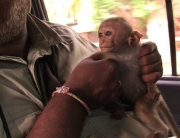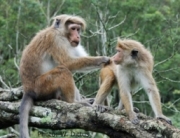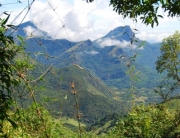Dittus, WPJ and Baker, A. (2023). Maternal care in wild toque macaques involves prolonged lactation & IBIs as adaptations to reduce maternal depletion & infant mortality in harsh environments. American Journal of Primatology, e23584. DOI: 10.1002/ajp.23584
Abstract
Weaning age in primates has been challenging to measure and new methods, involving molecular biomarkers in feces, tissue, or teeth have contributed to a solution. Here, we used a direct approach by briefly anesthetizing 442 female toque macaques (Macaca sinica) of Sri Lanka (over a 17‐year period) and manually testing their mammary tissue for the presence or absence of milk. Milk tests were related to known offspring ages and maternal care behaviors and indicated that older infants suckled milk well past the weaning age of 7 months that is often reported for food provisioned primates. Mothers strongly rejected their infants’ nursing attempts in two phases, the first at 7 months as an honest signal “giving notice” promoting a shift to greater independence from milk to solid food, and when “shutting down” at final weaning after 12–18 months. The shift to supplementary lactation coincided also with the cessation of mothers carrying their infants and a resumption of cycling. All infants up to 7.2 months suckled milk, 91% of them did up to 18 months, this continued for 42% of infants beyond 18 months, and normally none received milk after 22 months. Lactation extended into 2.2% of cycling and 10.7% of pregnant females (up to 50% of gestation). The interbirth interval was prolonged by factors predicted to draw on female metabolic energy reserves and included the duration of lactation, growth among primiparas, and dietary limitations. The last also increased menarche. Females offset the metabolic costs of lactation with increased foraging and catabolism, but infants died when lactation costs seemingly compromised maternal condition. The prolonged lactation and slowed reproduction are considered adaptations to promote infant survival and growth in an environment where the natural food supply limits population growth and competition for food and water impacts the mortality of the youngest the most.





